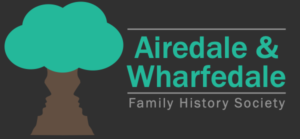Subject: No Place like Home
Speaker: Peter Higginbotham
The Wharfedale Family History Group met at the Salem Church Hall on Thursday 7th June. Chairman Lynda Balmforth opened the meeting and welcomed guest speaker Peter Higginbotham whose illustrated presentation was ‘No Place like Home’: the institutions that housed Britain’s children. Children’s homes over the years have been in many different guises. One of the earliest was founded by Thomas Coram in 1739. His Foundling Hospital was London’s first home for babies whose mothers were unable to care for them. This large establishment was supported by a number of wealthy individuals and artists including William Hogarth, Handel and Charles Dickens. The Coram Charity continues to this day providing support for vulnerable children and their families. Many early orphan asylums had strict admission requirements determined by legitimacy, health, wealth and race. Entry was often determined by election or payment of a lump sum.
One of the most well-known figures in child care was Dr Thomas Barnado 1845-1905 who established Barnado’s Homes for children from 1866 following his encounters with many destitute children in London’s East End. Many homes were established including cottage home developments in the style of a village. One early Barnado’s home was the Home for Little Incurables in Bradford. The Barnado’s Charity is still well-known today continuing to provide help for vulnerable children. Perhaps less well-known is Thomas Bowman Stephenson 1839-1912 a Methodist minister who founded what were to become National Children’s Homes in 1869. Hilton Grange in Bramhope was Yorkshire’s first National Children’s Home opened in 1907. Another influential figure was Edward Rudolph 1852-1933 founder of The Waifs and Strays Society (now The Children’s Society) which ran a number of smaller homes around the country including St Chad’s Home for Delicate Girls in Headingley, established 1889. Here the girls ran a very successful cottage industry producing and selling a variety of high quality knitted stockings.
Aside from these larger organisations there were many other smaller independent institutions which cared for children such as Ilkley Orphanage for Girls (now Margaret’s Court) and Joseph Nutter’s Orphanage for Boys in Bradford. There were also a number of occupational homes such as the Sailors’ Orphan Institute of Hull established 1837 and St George’s Northern Police Orphanage in Harrogate established 1897. Various religious groups ran their own homes including the renowned Magdalene homes for ‘fallen’ women and their babies. Certified schools were established from 1862 to remove children from the influences of the work house. Other types of institution include borstals, emigration homes, industrial schools and many more.
Local authorities took over control of children’s care in 1930 and their role was extended by the Children’s Act 1948. During the course of the twentieth century there was a gradual decline in residential care for children with a growing emphasis on vulnerable children staying with or being restored to their families. Today’s remaining children’s homes mainly cater for children with special needs. Local authority children’s homes were often located in large houses such as Inglewood in Otley, Wheatley Lawns in Ben Rhydding and Hill Top House in Ilkley.
Family historians can approach organisations that still exist such as Barnado’s for information and records and photographs may be available for a fee. Many former children’s homes have become schools and may have retained historic records. County archives may also hold records for local institutions. Peter’s websites childrenshomes.org.uk and workhouses.org.uk provide lots of useful information and details of his popular publications. Finally Lynda proposed a warm vote of thanks following questions from the floor. The group’s next meeting will be a research evening 7.30 pm Thursday 5th July. Access to all the main genealogical internet sites will be available, members and visitors all welcome, refreshments provided. If the latest series of Who do you think you are? has inspired you do come along and we’ll help get you started with your research or perhaps find a way of breaking down your brick walls.
